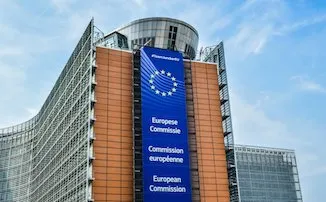
Upstream authorisation dossiers
Complex authorisation dossiers
Upstream authorisation dossiers submitted by hexavalent chromium manufacturers and formulators can cover hundreds of downstream users in complex supply chains. This strategy has not however allowed to take into account the diversity of downstream users and the substances’ conditions of use. The main weakness in this strategy lies in the fact that these users are covered by authorisation dossiers without participating to their creation. Additionally, the various stakeholders’ responsibility towards the search for alternatives is not clearly defined and the alternatives applicable to each industry are not precisely identified.
Hexavalent chromium compounds case
ECHA’s (European CHemicals Agency) assessing committees underlined the lack of specificity, representativity and transparency of upstream dossiers, particularly those submitted by CTAC and CCST consortia. The shortfall of submitted data led to uncertain exposure scenarios and, consequently, to an incomplete risk assessment. Committees additionally deemed the risk management measures and operational conditions not detailed enough to allow for an evaluation of their effectiveness and appropriateness.
This situation is critical for a CMR substance with no threshold.
The feedback from these past few years shows it is essential to involve all the stakeholders in the construction of joint/upstream applications, in order to describe in a realistic and unequivocal way the supply chain and the substance uses within. Facing the diversity of hexavalent chromium compounds users, upstream dossiers do not favour this implication. On the other hand, dossiers which regroup a small number of downstream users, joint applications, with the implication of contractors, allow for the minimisation of uncertainties linked to upstream dossiers and highlighted by expert committees.
What future for CrVI?
To date, the end of coverage for uses submitted by upstream consortia for hexavalent chromium is scheduled for 2024 (providing that the Commission’s vote takes place). Thus, in the case of a need for an extension to use these substances, a renewal application should be prepared as of now. Indeed, the submission date for the review of ongoing authorisations will probably be at the end of 2022 (18 months before the end of the authorisation). There is however no certainty today that such dossiers will be prepared. Furthermore, nothing says that upstream dossiers applicants will quickly make there intentions known. There is also a risk that new data (for example compliance checks) could question, before 2024, upstream authorisations that have already been granted.
Preparing a foolproof application
Our recommendations
We recommend industrialists who critically need to extend an authorisation for hexavalent chromium compounds to get organised in order to obtain their own authorisation as soon as the end of 2022. As the average cycle to prepare, process, and validate a dossier is 3 years - 18 months to prepare, taking into account data collection period long enough to build a strong strategy, then 18 months of processing by ECHA and validation from the European Commission - the strategy reflection should start right now in order to anticipate the end of upstream authorisations in 2024.
The REACH Authorisation Alliance
The REACH Authorisation Alliance (R2A) falls within this perspective: it aims at creating a place for reflection, exchanges and strategy incubation to apprehend as best as possible this situation between downstream users, contractors and formulators. Whether the strategy is to submit an individual or a joint application, or to be covered by an upstream dossier, it is vital to make an enlightened decision with a long term perspective, taking into account local authorities’ controls, the implementation of viable alternatives and necessary changes in the supply chain.
Upstream authorisation dossiers
Complex authorisation dossiers
Upstream authorisation dossiers submitted by hexavalent chromium manufacturers and formulators can cover hundreds of downstream users in complex supply chains. This strategy has not however allowed to take into account the diversity of downstream users and the substances’ conditions of use. The main weakness in this strategy lies in the fact that these users are covered by authorisation dossiers without participating to their creation. Additionally, the various stakeholders’ responsibility towards the search for alternatives is not clearly defined and the alternatives applicable to each industry are not precisely identified.
Hexavalent chromium compounds case
ECHA’s (European CHemicals Agency) assessing committees underlined the lack of specificity, representativity and transparency of upstream dossiers, particularly those submitted by CTAC and CCST consortia. The shortfall of submitted data led to uncertain exposure scenarios and, consequently, to an incomplete risk assessment. Committees additionally deemed the risk management measures and operational conditions not detailed enough to allow for an evaluation of their effectiveness and appropriateness.
This situation is critical for a CMR substance with no threshold.
The feedback from these past few years shows it is essential to involve all the stakeholders in the construction of joint/upstream applications, in order to describe in a realistic and unequivocal way the supply chain and the substance uses within. Facing the diversity of hexavalent chromium compounds users, upstream dossiers do not favour this implication. On the other hand, dossiers which regroup a small number of downstream users, joint applications, with the implication of contractors, allow for the minimisation of uncertainties linked to upstream dossiers and highlighted by expert committees.
What future for CrVI?
To date, the end of coverage for uses submitted by upstream consortia for hexavalent chromium is scheduled for 2024 (providing that the Commission’s vote takes place). Thus, in the case of a need for an extension to use these substances, a renewal application should be prepared as of now. Indeed, the submission date for the review of ongoing authorisations will probably be at the end of 2022 (18 months before the end of the authorisation). There is however no certainty today that such dossiers will be prepared. Furthermore, nothing says that upstream dossiers applicants will quickly make there intentions known. There is also a risk that new data (for example compliance checks) could question, before 2024, upstream authorisations that have already been granted.
Preparing a foolproof application
Our recommendations
We recommend industrialists who critically need to extend an authorisation for hexavalent chromium compounds to get organised in order to obtain their own authorisation as soon as the end of 2022. As the average cycle to prepare, process, and validate a dossier is 3 years - 18 months to prepare, taking into account data collection period long enough to build a strong strategy, then 18 months of processing by ECHA and validation from the European Commission - the strategy reflection should start right now in order to anticipate the end of upstream authorisations in 2024.
The REACH Authorisation Alliance
The REACH Authorisation Alliance (R2A) falls within this perspective: it aims at creating a place for reflection, exchanges and strategy incubation to apprehend as best as possible this situation between downstream users, contractors and formulators. Whether the strategy is to submit an individual or a joint application, or to be covered by an upstream dossier, it is vital to make an enlightened decision with a long term perspective, taking into account local authorities’ controls, the implementation of viable alternatives and necessary changes in the supply chain.







